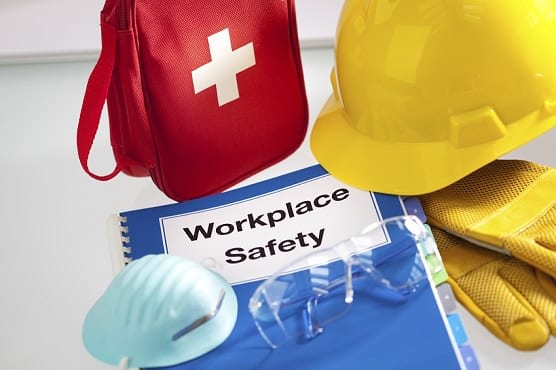Every industry has its own risks and exposures that lead to workplace incidents. Most common types of workplace injuries keep workers away from work and leads to loss in production days.
The top 5 occupations with the largest number of workplace injuries resulting in days away from work are; Services (such as police and fire-fighters), transportation/ shipping, manufacturing/ production, installation/ maintenance & repair as well as construction.
Regardless of how conscientious an employee is about observing health and safety rules on the job, the potential for injuries and accidents in the workplace is ever-present. Below is a list of the most common workplace injuries and accidents that occur in every work setting.
1. Slips, trips and falls
Slip, trips and fall accidents are the most common incidents that occur and are the leading cause of occupational injury. Whether the work is performed in a shop, office or construction site – wet and slippery surfaces are likely to be encountered at some point. Some of the most common types of injuries suffered in slip and trips accidents include fractures, sprains, knee injuries and hand or wrist injuries. Slips and trips can be avoided by paying attention to what is going on around the floor of the workplace. Safety guidelines to ensure spills are immediately cleaned and no debris is left present should be made available to employees. Falls from working at height also poses risk for mostly workers in jobs such as construction, installation and maintenance. Employers must take steps to safeguard workers against falls by applying risk control measures of training, use of purpose-designed equipment, proper maintenance of equipment and fall prevention systems.
2. Overexertion
Overexertion is cited as one of the most expensive and common workplace injury. EHS Today explains overexertion as, “event or an exposure that leads to an injury due to excessive physical effort such as lifting, pulling, pushing, turning, wielding, holding, carrying or throwing”. Ergonomics play a role in overexertion injuries, due to the fact that when at task is not ergonomically designed, workers experience muscle strain in the back, shoulders or abdomen. Workers may become overexerted when asked to perform jobs in which they are not properly trained for.
3. Inhaling toxic fumes
Some workers are employed at locations with toxic fumes, where they are required to take extra caution so as not to breathe in these fumes due to the damages they may cause. The inhalation of toxic fumes can result in serious health issues since the toxins can prevent oxygen from being absorbed into the blood, causing eventual failure of the respiratory system. Protective equipment such as safety goggles is indispensable in these situations.
4. Exposure to loud noise
Constant noise pollution not only causes damage to hearing, but exposure to constant and excessive noise can cause other health problems, such as; headaches, elevated blood pressure, fatigue, irritability, digestive disorders and increased susceptibility to colds and other minor infections. Exposure to noise can also exacerbate stress and increase risk of accidents. Effective communication is vital in the workplace and the occurrence of high noise levels can result in a disturbance of speech communication. Ear protection should be used as a safety measure to prevent industrial deafness.
5. Fights in the workplace
Workplace violence may be any act or threat of physical force, threat or intimidation against workers occurring at the work site. Physical violence, bullying, verbal abuse, racial harassment and sexual harassment are the different types of workplace violence. Workplace Violence is wide- spread in South Africa, affecting public and service sectors more than private sector. Research indicates that when policies are in place, the frequency of workplace violence reduces up to 75%.
6. Explosions and fires
Risk factors such as faulty gas line, defective electrics, improperly storing flammable items, stacking electrical equipment, poor pipefitting or open flames frequently cause unexpected explosions and fires in the workplace. The resulting injuries that can be incurred include damage to the respiratory system, varying degrees of burns and potential disfigurement. Every workplace should have a clearly communicated evacuation / emergency plan.
Check our Incident Investigation Course here

